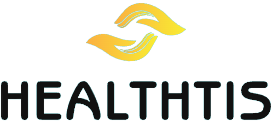Adrenoleukodystrophy – What is it, Symptoms and Treatments!
Adrenoleukodystrophy – What it is, Symptoms and Treatments we should know. Additionally, adrenoleukodystrophy (ALD) refers to a number of different hereditary conditions that affect the nervous system and adrenal glands. The three main categories of adrenoleukodystrophy are infantile cerebral adrenoleukodystrophy , adrenoleukodystrophy , and Addison’s disease .
The gene that causes ALD was identified in 1993. According to the Oncofertility Consortium, ALD occurs in about 1 in 20,000 to 50,000 people and mostly affects men. Women with the gene tend to be asymptomatic or mildly symptomatic, meaning no symptoms or few symptoms. The symptoms, treatments, and prognosis of ALD vary depending on which type is present. ALD is not curable, but doctors can sometimes slow its progression.
News of the week:
Types of Adrenoleukodystrophy: There are three types of Adrenoleukodystrophy.
- Childhood cerebral ALD mainly involves children between 3 and 10 years of age. It progresses very quickly and causes severe disability and even death.
- Adrenomyelopathy mainly affects adult men. It is milder than childhood cerebral ALD. It also advances slowly by comparison.
- Addison ‘s disease is also known as adrenal insufficiency. Addison ‘s disease occurs when your adrenal glands don’t produce enough hormones.
Main Causes of Adrenomyelopathy: Adrenoleukodystrophy protein(ALDP) helps your body break down very long chain fatty acids (VLCFAs). If the protein doesn’t do its job, fatty acids build up inside your body. This can damage the outer layer of cells in your:
- Spinal cord
- Brain
- adrenal glands
- Testicles
People with adrenomyelopathy have mutations in the gene that makes ALDP. Their bodies don’t produce enough ALDP.
Men are typically affected by adrenomyelopathy at an earlier age than women and usually have more severe symptoms. Adrenomyelopathy affects males more than females because it is inherited in an X-linked pattern. This means that the genetic mutation responsible is on the X chromosome.
Men have only one X chromosome, while women have two. Since women have two X chromosomes, they can have one normal gene and one copy with the genetic mutation.
Women who have only one copy of the mutation have much milder symptoms than men. In some cases, women who carry the gene have no symptoms. Your normal copy of the gene makes enough ALDP to help mask your symptoms. Most women with ALD have adrenomyelopathy . Addison’s disease and childhood cerebral ALD are less common.
Key Symptoms of Adrenoleukodystrophy: Symptoms of childhood cerebral adrenomyelopathy include:
- muscle spasms
- seizures
- Difficulty swallowing
- hearing loss
- Problem with understanding the language
- impaired vision
- hyperactivity
- Paralysis
- With the
- Deterioration of fine motor control
- crossed eyes
Signs of adrenomyelopathy include:
- Insufficient control of urination
- weak muscles
- Stiffness in the legs
- Difficulty thinking and remembering visual perceptions
Signs of adrenal insufficiency or Addison’s disease include:
- little appetite
- Weight loss
- Decreased muscle mass
- vomit
- weak muscles
- With the
- Darker areas of skin color or pigmentation
Diagnosis of Adrenoleukodystrophy: The symptoms of adrenomyelopathy can mimic those of other diseases. Tests are needed to distinguish adrenomyelopathy from other neurological conditions. Your doctor may order a blood test to:
- Look for abnormally high levels of VLCFAs
- Check your adrenal glands
- Find the genetic mutation that causes adrenomyelopathy
Your doctor may also look for damage to your brain using an MRI. Skin samples or a biopsy and fibroblast cell culture can also be used to test for VLCFAs.
Children with suspected ALD may need additional tests, including vision screens.
Treatments for Adrenoleukodystrophy: Treatment methods depend on the type of adrenomyelopathy you have. Steroids can be used to treat Addison’s disease . There are no specific methods to treat the other types of adrenomyelopathy .
- Some people were helped by:
- Switching to a diet that contains low levels of VLCFAs
- Taking Lorenzo’s Oil to Help Lower High VLCFA Levels
- Taking medication to relieve symptoms like seizures
- Doing physical therapy to loosen muscles and reduce spasms
Useful links:
Doctors continue to look for new adrenomyelopathy treatments . Some doctors are experimenting with bone marrow transplants. If children with infantile cerebral ALD are diagnosed early, these experimental procedures may be able to help.
